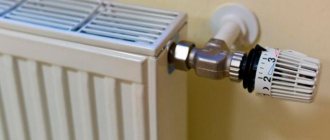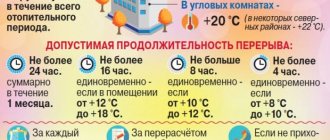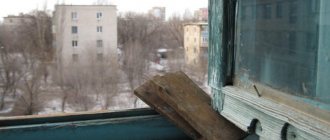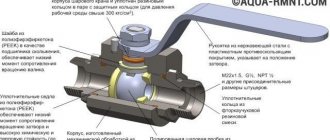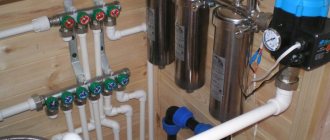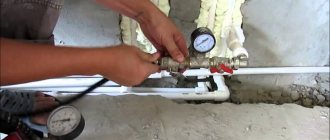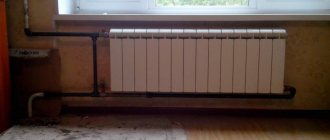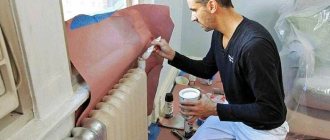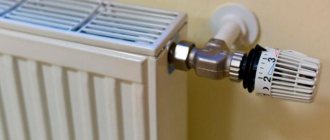With the beginning of the heating season, problems begin once again in the vastness of the country. The batteries leak, do not heat well or do not provide heat at all. Sometimes they even give it more than is needed - when the cold weather outside suddenly gives way to an unexpected Indian summer. Radiators of different temperatures in a room or in different rooms of the same apartment are one of the common problems that homeowners have to solve.
Parameters for starting heating
As autumn approaches, the temperature outside becomes lower and lower, people touch their batteries every day and hope that today they will become hot. If this does not happen, then the residents look for the culprits, but in fact, all standards for the supply of heat to houses are specified in Resolution No. 354 of 2011.
This document states that heat is supplied at an outside temperature of 8 degrees Celsius, if it lasts for five days in a row . If this indicator fluctuates in one direction or the other over the specified time, then the radiators and risers in the apartments will remain cold.
Heat is supplied only on the sixth day and, as a rule, in most cases the heating season begins on October 15 and ends on April 15.
In this video you will learn the temperature standards in the apartment:
Standards for an apartment
Temperature standards in heating radiators are different for a particular room. The air in apartments should be heated to the following level:
- living area and kitchen - +18°C;
- corner apartments - +20°C;
- bathroom and toilet - +25°C.
Corner apartments should be heated more strongly due to the presence of cold corner walls. The standards for common premises are slightly different:
- entrance — +16°C;
- elevator — +5°C;
- attic and basements - +4°C.
Measurements in a residential area are made on the internal walls no closer than a meter from the outer wall and one and a half meters from the floor level.
If the parameters do not comply with the standards, the consumer must notify the management company. After the required checks, the heat charge can be reduced by 0.15% per hour of deviation from the standards.
When the housing office carries out work on connecting batteries
In Russia, the heating season begins when the average daily outside air temperature becomes below +8°C, and ends when it begins to exceed +8°C, and it must be maintained for up to five days.
Standards
Let's consider the minimum temperature in the rooms: In the living room +18°C; In the corner room +20°C; In the kitchen +18°C; In the bathroom +25°C; In the lobby and on the landing +16°C; In the elevator room +5°C; In the basement +4°C; In the attic +4°C. This value is measured on the inner wall of each room, and the distance from the outer wall should be 1 m, and from the floor 1.5 m. If hourly deviations from the standard parameters are noticed, then the heating fee should be reduced by 0.15%. Please note that this temperature standard is valid after the opening of the heating season, and there are no indicators for the off-season. You also need to know that hot water must have a temperature from +50°C to +70°C (SNiP 2.08.01.89 “Residential buildings”). It is measured by opening the tap and lowering the thermometer into the container to a special mark.
Battery temperature
There are minimum and maximum standards. Sometimes, even when heating is started, there is not enough heat in the room due to the fact that the temperature of the radiators is far from the standards. The reason for this is the banal airiness of the system. You can fix the problems with the help of a specialist or yourself using a Mayevsky crane.
If the problem arises due to worn-out riser pipes or batteries, then you simply cannot do without the help of specialists. If the heating system did not work and the air in the apartment was colder than specified in GOST standards, then this entire period is not subject to payment.
There are no minimum temperature standards for heating radiators, so it is customary to rely on the air parameters in the apartment. Normal air parameters during the heating period are +16…+25°C.
To document that the temperature of the heating system does not meet the norm, it is necessary to invite an authorized representative of the heating service provider. What the water temperature in the batteries should be is described in SNiP 41−01 of 2003:
- If a two-pipe design is used in the room, then 95°C is the maximum.
- The norm for a single-pipe design is +115°C.
- The winter temperature norm for heating radiators in an apartment is +80…+90°C. If it approaches +100°C, then urgent measures must be taken to prevent water from boiling in the system.
Although many battery manufacturers often specify a maximum temperature threshold that is high, you should not reach it frequently as this will damage the battery.
To ensure that the heating complies with GOST standards, you need to take your own measurements and understand what the temperature of the water in the heating radiators is:
- An ordinary mercury thermometer can be used, but then 2°C will need to be added to the result obtained.
- An infrared thermometer will also work.
- The alcohol thermometer must be tightly tied to the battery, wrapped in thermal insulation.
If the results obtained are far from normal, then you need to submit an application to the heating network office with a request to carry out control measurements . A commission will visit the apartment and make all the necessary calculations.
How to reduce your heating bills
To do this, the owner or tenant must contact the billing company. When applying, a statement is written indicating the name of the owner or tenant, address and the period for which the receipts need to be recalculated. Copies of supporting documents are attached to the application.
Reasons why recalculation should be carried out
- According to clause 6 of Appendix 1 to Resolution No. 354, the fee is reduced if there is no heat supply for more than 24 hours during the month in total or more than 16 hours at a time. If the room is warmer than 12°, recalculation is carried out in the absence of heat for 8 hours, and at 8 degrees - less than 4 hours. Charges are withdrawn for the whole day.
- If there was no heat supply for several days, the entire period is removed from the calculation. As a rule, the heating companies and the management company have information about outages, so the payment will be recalculated automatically.
- Another reason for recalculation is errors in calculations and databases. In most cases, the amount will be reduced without the owner’s request, but sometimes an application is required, accompanied by supporting documents.
- Adjustment for monthly calculation of the average amount for heat supply. With this method, accruals are made year-round in equal parts, based on last year’s average. At the end of the year, accruals are adjusted. Recalculation is carried out without an application.
- Correction of meter data - a situation arises when a heat meter fails. If the readings are incorrect, a recalculation is carried out based on the average data for the previous period.
Actions in the absence of heat
If there is any discrepancy between the heating system and GOST, you need to find the cause of the cold radiators. The best person to deal with this will be the specialists of the supplier company, who will be able to officially record the temperature in the living room.
If the problem is caused by poor quality maintenance of the systems of an apartment building, then the solution to the problem lies entirely with the organization supplying the heat. At the same time, all residents should be recalculated for heat or they should be completely exempt from paying if the radiators did not heat at all.
Any application from the residents of the house to the communal structure must be considered as soon as possible, and the commission must record on the spot the fact of inadequacy of the services provided.
Knowing what the temperature of the radiators in the apartment should be and at what period the heating starts, each resident of an apartment building can determine for himself whether the temperature indicators comply with the established standards. This will help you take action in time and solve the heat problem.
How to determine that the water temperature in the radiators is below normal?
A device that measures surface temperature with a beam.
The quality of heating is often determined by the air temperature in the room. If you feel that the rooms are cool, you need to measure the temperature. The maximum permissible temperature is +18 degrees. If it is lower, then you need to identify the cause. The main reasons may be leaky windows and doors, but a more compelling reason is low water temperature in the radiators.
To determine what the temperature of the batteries in your apartment should be, there are special calculations. They are compiled by specialists who compare the temperature of the water in the radiators and the ambient temperature. You need to call a special service that will measure the temperature in the heating radiators in your apartment. The obtained data is compared with the temperature graph data. This graph has already calculated what temperature should be in the direct and return water supply pipes.
Table. Temperature graph of the ratio of heating to ambient temperature.
| Ambient temperature | Direct water temperature | Return water temperature |
| -15 | 105 | 70 |
| -10 | 92 | 63 |
| -5 | 78 | 56 |
| 65 | 48 | |
| +5 | 50 | 39 |
These data are given for a single-pipe heating system, with water supplied from bottom to top. According to the table, when the outside air temperature is, for example, -10 degrees Celsius, the return water temperature should be at least 63 degrees. And this does not depend on which floor the measurements are taken - on the first or fifth. In a two-pipe heating system, the water temperature at -15 outside is allowed to be 95 degrees with direct water supply.
Each locality has its own temperature chart. It is approved by the city administration.
If the battery temperature in the apartment is below normal, this means that the boiler room is saving on heating. After water measurements, specialists draw up a report, and utility workers must correct all problems. At the same time, everyone has the right to demand a recalculation of heating fees. The rent should be reduced according to the square footage of the apartment. The temperature of the water in the radiators is one of the main factors in a warm home. According to battery temperature standards, a coolant must be supplied to the apartment, the degree of heating of which ranges between 80-85 degrees.
It is very simple to make heating with heating elements in your home, and each heat exchanger will not depend on the others. To do this, simply screw the heating element into the bottom end of the battery and connect it to the electrical network.
Here you will find everything about infrared heating of a private house: reviews, calculations and drawings.
Methods for measuring water in radiators
When considering the question of how to measure the temperature of a battery in an apartment, the following methods can be distinguished:
- an ordinary thermometer (on the surface of the radiator);
- infrared thermometer;
- alcohol thermometer;
- special electrical device.
When measuring with a regular thermometer, you need to add 1-2 degrees to the result. A more accurate result will be given by an infrared device, the error of which is 0.5 degrees.
In order to regularly monitor the temperature of the water in the batteries, you can use an alcohol thermometer. To do this, the device is attached with tape to the radiator and wrapped in heat-insulating material.
The battery may not heat up evenly.
You can also use an electric version of the thermometer for measurements. To do this, a wire with a thermocouple is wound to the battery, and it takes readings of the degree of heating. If a consumer calls a special commission to measure the temperature of heating radiators in an apartment, then their device must have a quality certificate and first pass state inspection. The actions of specialists must comply with GOST 30494-96 (clause 4 in the “Control methods” section).
If the temperature of the heating pipes in the apartment is higher than normal, then it can be adjusted in several ways:
- using special devices;
- ventilation;
- using thick curtains.
There are special taps with which you can regulate the temperature. They are installed on each radiator. A simpler method is to ventilate the room. You can also simply use curtains made of dense material, which will let less sunlight into the room. It is much easier to deal with high room temperatures than low ones. What to do if the minimum temperature of the batteries in the apartment is lower than indicated in the temperature chart? To do this you should:
- call utility services;
- insulate windows, doors and walls;
- install new radiators.
If you don’t know how to check the temperature of the batteries in the apartment, you can call specialists. Also read: “Blowing and cleaning batteries.”
Utility services measure plumbing and heating systems. After this, an act is drawn up. Then, if the tenant's claims are confirmed, utility companies must increase or decrease water heating. Another way would be to install new heating radiators. Details about the installation can be found in the video:
You should pay attention to the material from which the batteries are made.
Aluminum radiators have high thermal conductivity, so they will transfer heat well. But cast iron, although they are able to retain heat longer, will release it more slowly. Because of this, the room will take a long time to warm up.
The speed of water movement also affects the temperature in the heating pipes in apartments. Don’t forget that corner apartments are always cooler, because they have more walls in contact with the street. To reduce heat loss, it is necessary to insulate the walls. Insulating windows and doors through which cold air enters will also not be superfluous.
Even the most fashionable and modern infrared heating of a private home consumes the same amount of electricity as any other electric heater of equal power, even the most ancient one.
You can read more about infrared heating and energy consumption in this article.
Temperature measurement techniques
An ordinary household thermometer on the surface of a heating device. A device designed to measure temperature in a non-contact manner. Such a meter is called -
. Alcohol thermometer. A special electrical device. If you take measurements with an ordinary thermometer, you will need to add a few more degrees to the indicators. The most accurate readings can be obtained using an infrared device - a pyrometer. Its error is no more than 0.5 degrees. To regularly monitor temperature, use only the safest device - an alcohol thermometer. For these purposes, it is attached to the radiator using tape and wrapped in thermal insulation material. How to use the electric version of the thermometer? You need to take a wire with a thermocouple and attach it to the heating device. This is how the indicators are taken. If a commission comes to your apartment to measure the temperature of the batteries, they must have a certified device. You have the right to demand from a representative of the inspecting organization documents confirming that the equipment has passed state verification. Very serious requirements are imposed on the heating system. The process of delivering hot coolant using circulation pumps (the installation rules for the heating system are written here) to a residential building and its uniform distribution throughout all apartments is not an easy task. This issue must be approached responsibly, and with an understanding of all the technological subtleties. In order for the heating system to work efficiently, all its elements must function harmoniously. This applies to all pipes and radiators in each of the apartments of a multi-story building. Therefore, when replacing radiators (read how to install heating radiators in a private house in this article), you need to take into account the features and subtleties of the heating main. If this is not done, some apartments will experience an excess of heat, while bad times will come for the residents of other apartments (they will have cold radiators). How can the heating of urban dwellings be optimized? Answer: by introducing the following standards: the safety regulations state that the temperature of the working liquid substance in the heating main must be 20 degrees less than the temperature of self-igniting materials. For residential multi-apartment buildings, the coolant limit has established standards - 65 - 115 degrees Celsius (this takes into account seasonality); if the water, for some reason, overheats and reaches a reading of 105 degrees, emergency measures must be taken to prevent it from boiling; the standard limit for water circulating through the batteries is 75 degrees. In case this indicator is exceeded by the battery needs to install a restrictive structure (about methods of heating in a private house is written here); in regions located in the middle latitudes of our country, the heating season, as a rule, begins on the fifteenth of October and ends on the fifteenth of April. In some cases, these standards may be changed. Service providers should rely on the average daily outdoor temperature.
What should you know about the temperature in heating radiators in an apartment?
You can screw a thermal head into the end of the battery.
To live comfortably in an apartment, you need to monitor the temperature of the batteries. To do this you need:
- independently measure the temperature of the pipes (use regular, infrared, alcohol thermometers or a special electrical device with a thermocouple);
- call utility workers if the temperature does not meet the standards (as a rule, it is lower than required);
- if the temperature of the battery during the heating period in the apartment is higher than normal, then special taps can be used to regulate it.
A pleasant microclimate in an apartment is the key to health, so do not neglect it. In addition, the degree of air humidity plays a crucial role. If it is too dry, respiratory problems may result. The amount of fresh air is also standardized for each room separately. According to many experts, the standards are somewhat too high, so even if the air exchange is only half, this is quite acceptable.
The annual rise in price of resources forces the end consumer to think not only about their savings, but also about the quality of the utility services provided. One of the most significant expense items in paying for an apartment is heating, so consumers monitor its parameters especially carefully. To do this, it is worth finding out what the normal temperature of the batteries in the apartment is in 2019.
Temperature standards for the heating system in an apartment building
The heating circuit in apartment buildings is built in cooperation with a centralized system to which the pipes are connected. Through them, the coolant is directed to the apartment building, where its further supply is regulated by inlet valves. After this, the water goes through the risers and eventually ends up in the radiators and radiators of each apartment.
The described processes, as well as everything related to the rules for providing the population with utility resources, are reflected in the Decree of the Government of the Russian Federation dated May 6, 2011 No. 354 “On the provision of utility services to owners and users of premises in apartment buildings and residential buildings” (hereinafter referred to as Decree No. 354). Heating quality requirements are set out in Section VI of Appendix No. 1 to the rules of Decree No. 354.
In addition, detailed rules for the provision of heating services are prescribed in the Order of Rosstandart dated June 11, 2014 No. 544-st “GOST R 51617-2014. National standard of the Russian Federation. Housing and communal services and management of apartment buildings. Public utilities. General requirements" (hereinafter - GOST R 51617-2014) and "GOST 30494-2011. Interstate standard. Residential and public buildings. Indoor microclimate parameters”, approved by order of Rosstandart dated July 12, 2012 No. 191-st (hereinafter referred to as GOST 30494-2011).
These acts establish the parameters of the coolant for the heating system of an apartment building. Thus, the temperature of the coolant (water) when supplied to the system is equal to the temperature of the water when it leaves the heating boiler. As a rule, the coolant should be brought to a temperature of 130-150 °C, but this indicator also depends on the outside temperature in the region.
Typically, the water leaving the boiler should have a temperature of 115 °C.
However, the standard temperature in the heating system can be within 95 ° C or 105 ° C (for different systems).
Next, to create comfortable conditions in the room, the proper condition of the parameters of the riser, which conducts water from the heating unit to the apartment, is ensured. They vary depending on the summer and winter seasons.
Of course, in practice, the temperature of the coolant in the riser depends on the operation of the thermal power plant and on heat loss on the way to the house. However, the riser temperature in winter should be in the range of 70-90 °C.
What should the temperature of the radiators be?
The traditional coolant in the MKD heating system is water heated to 90°. Initially, when leaving the boiler it is much hotter, but on its way to the consumer, heat loss and partial cooling inevitably occur.
Coolant temperature at different stages
The boiler room or thermal power plant heats the water to 115–120° and supplies it to the heating network. You will be surprised how thermal engines manage to heat it without letting it boil. It's all about the high pressure under which the carrier is supplied. The boiling water cools down in the pipes. At the heating points of the apartment buildings, it is additionally cooled to 80–90° and distributed among the internal communications. Without cooling, the heating system will overheat. As a result, pipes and radiators will fail, and residents may get burned by leaning against overheated radiators.
Heating depends on the average temperature outside. At the beginning of the heating season and before its end, when the air is still warm, the water is supplied to the pipes relatively cool - only 70 degrees. In late autumn and winter it is made hotter. As a result, the temperature in the internal pipes increases to 80–90 degrees. This is the limit - radiators and risers should not be hot on the outside. According to SNiP 41–01–2003, their surface cannot be warmer than 75° in order to protect consumers from burns.
The thermal parameters of the medium supplied to MKD and other consumers are regulated by SNiP 41-02-2003 - “Heating networks” and SNiP 41-01-2003 - “Heating and ventilation”.
Why do batteries heat up differently?
The temperature of the radiators depends on the design of common building communications - the older the building, the greater the heat loss and the colder the rooms.
- Heating is lost most strongly in single-pipe systems, where supply and drainage occur in the same pipe. The radiators are connected in series one after another, and the coolant gradually cools down as it passes through them. Therefore, in one apartment building there are “warm” and “cool” rooms. Single-pipe structures are installed in Khrushchev and Stalin buildings.
- The water inside the pipes cools a little slower in the “Leningradka” - an improved single-pipe system that provides for the connection of bypass routes. This design is also found in old MKDs.
- In two-pipe systems installed in Brezhnevkas and new high-rise buildings, outflow and supply are carried out in separate branches, so the water does not mix and does not cool down for a long time.
- The least losses come from a modern radiant heating system, where the radiators are connected in parallel and do not affect each other.
Autonomous heating is very convenient. In this case, heating is carried out in a mini-boiler room or boiler installed in the basement or next to residential buildings. This reduces heat loss, and residents will be able to reduce or increase heating, reducing heating costs. Such heating systems are now being installed in private households and new apartment buildings.
What is the temperature of the carrier in different thermal systems
SNiP 41-01 of 2003 specifies standards for various types of communications:
- In a single-pipe system, the coolant is heated to 105°. This is inconvenient because you constantly have to fight against its boiling. But there is simply no other way - the water, after passing through the heat devices installed in series, will quickly cool down.
- In a two-pipe design, the coolant is colder - only 95°. Compared to the single-pipe option, the risk of boiling is much lower here, which means that the elements of the heating system will last longer.
- In modern high-rise buildings, the water in the heating lines is heated to approximately 80–90°. This is enough to maintain the required temperature.
Air temperature standards in the apartment
The feeling of comfort from heating a room is subjective. However, there are uniform standards determined by the physiological needs of a person, as well as the purpose of the premises in which he resides.
Although there is a fairly wide range of standards that prescribe what the temperature of the water in the heating system of an apartment building should be, the standards for the thermal conditions of the air in the apartment are very unambiguous.
So, in accordance with the standards, during the heating season the following temperature regime must be maintained in the apartment:
- in the living room - 18 °C;
- in a living corner room - 20 °C;
- in the bathroom - 25 ° C;
- in the toilet (separated from the bathroom) - 18 ° C;
- in a shared bathroom - 25 °C;
- in the kitchen - 18 °C.
This standard according to GOST allows you to preserve the health of residents without exposing them to adverse conditions.
Air ratio parameters
The room must have a certain air exchange rate, for example, if the room is residential and has an area of 18 or 20 m2, then the rate should be 3 m3/h per square meter. m., the same parameters are also necessary in regions where the temperature reaches −31°C and drops below. In dormitory kitchens and apartments equipped with electric and gas two-burner stoves and having an area of up to 18 m2, aeration is 60 m3/h. If there is a three-burner appliance in the room, then this value will be 75 m3/h, if there is a gas stove with four burners - 90 m3/h. For a bathroom with an area of 25 m2, the air exchange rate should be 25 m3/h, and for an individual restroom with an area of 18 m2 - 25 m3/h. If the bathtub and toilet are combined and their area is 25 m2, then the aeration is 50 m3/h. If the common restroom has an area of 16 m2, then an air exchange rate of up to 50 m3/h is required for one toilet, and 25 m3/h for a urinal. If the room is corner, then the room should be 2°C higher than usual. During warm periods, the temperature in the elevator room should not exceed 40°C.
Battery temperature standard
Factors affecting room heating include thermal conductivity, other technical characteristics, as well as the order of installation of batteries. Therefore, compliance with the rules for their installation and use will ensure that the temperature of the heating radiators in the apartment and in the house meets the established standards.
In addition, you should carefully consider determining the number of battery sections depending on the area of the room. For example, a device in which the coolant is heated to an identical temperature will have a different effect on the heat flow with sections 5 and 7 on it.
How to find out the temperature of the coolant in the batteries
When doubts arise about the quality of the heating services provided, and the inhabitants of the apartment simply begin to freeze, measures should be taken to determine the cause. To do this, measure the temperature:
- air in the room;
- pipes;
- batteries;
- coolant - water in the heating system.
The data obtained will help you understand whether the room is really unreasonably cold or whether it is just a subjective feeling.
It must be taken into account that independent measurements of heating indicators are not direct evidence of violation of standards. However, they can serve as a basis for filing a complaint and inviting representatives of the service organization for control measurements.
Determining the water temperature in the central system
It should be noted that reliably measuring the temperature of the coolant in a central heating system is not so easy. The most accurate indicator remains only the air temperature in the room. However, you can do the following:
- Open the tap if it is installed on the radiator in the apartment.
- Place a container under it, after placing a thermometer there.
- Collect water.
- Wait for the final thermometer reading.
This indicator must comply with the described standards, but upward deviation from them is also allowed. The maximum temperature deviation is up to 4 °C.
In addition, if air is detected in the heating system of the apartment, you should contact the service organization.
Determining hot water indicators
There is another way to establish the truth, related to the fact that the temperature of the heating batteries in the apartment and the hot water supply are directly related. Therefore, it is advisable to measure the water degree like this:
- Open the hot tap.
- Wait 3 minutes for the water to heat up to maximum.
- Take a container and place it under the stream without closing the tap.
- Place the thermometer in the center of the container.
- Wait for the final readings from the device to be received.
If the device shows a number from 60 to 75 °C, everything is normal with the coolant. If the temperature data is lower, it is possible that the water in the heating system is not heated enough.
Signs and causes of poor heating performance
| Characteristic signs | Possible reasons |
| The riser is cold | Technical faults outside the apartment |
| The riser is hot, the batteries are cold | Valves are closed, heating system is clogged |
| Cold bottom of radiator | Valves are not open enough, radiators are clogged, low coolant pressure in pipes |
| Cold top of batteries | Airlock |
| The last radiator in the system is cold | System not adjusted, insufficient pressure |
| The part of the radiator farthest from the connection pipes is cold | Insufficient pressure, clogged battery, air lock |
How to measure battery temperature correctly
When the issue with the coolant is clarified, you can think about how to measure the temperature of the battery in the apartment. This is easy to do in the following ways:
- Use a regular household thermometer. You need to apply it to the battery and wait until it warms up. To account for the error, it is better to add 1-2 degrees to the data obtained.
- Use an alcohol thermometer, attaching it to the radiator with tape, and then insulating it with insulating material, such as foam rubber. The information obtained by this method is indicative in dynamics. The device can be left for a long period to continuously monitor the situation.
- Use an infrared thermometer. In practice, they have a small error, and do not require direct contact with the heating device. And the result is given instantly.
- Use an electrical measuring instrument with a thermal ramp and sensor. The sensor is installed on the battery, and when the “measure temperature” function is selected, the device displays its value.
What to do if standards are violated
If you find that the radiators in the apartment are cold, you should find out whether this is a problem exclusively for this room or whether all residents of the house are faced with it. A collective appeal always attracts more attention than an individual one.
If the quality of heating is unsatisfactory and does not comply with SNiP, a complaint can be filed:
- to a service organization: homeowners association, management company, housing construction cooperative;
- resource supply company;
- emergency dispatch service;
- housing inspection. It usually operates a special hotline for such requests.
Organizations will receive the complaint over the phone and then register it. After this, specialists will establish and eliminate the cause of the lack of heating, recording a violation.
Later, based on the heating network inspection report, a recalculation for the period of no heat occurs.
If the above organizations do not take any measures to restore heating, you should file a complaint with Rospotrebnadzor and the prosecutor's office.
conclusions
The legislator established standards for the characteristics of the heating system, paying special attention to the optimal temperature in the living room. Its value is the most important for residents, and it is also easy to check. If it is lower than required, it means the battery is not heated enough. And in case of non-compliance with the standards, you can file a complaint with the service organizations, not forgetting about recalculating the fee if it is discovered that heating services are of inadequate quality.
Lawyer. Member of the Bar Association of St. Petersburg. More than 10 years of experience. Graduated from St. Petersburg State University. I specialize in civil, family, housing, and land law.
What should be the temperature in the rooms
Thermal standards for living rooms, kitchens, bathrooms, toilets, corridors are specified in GOST 30494–2011, SanPiN 2.1.2.2645 and Resolution No. 354 of 05/06/11. The documents also indicate the humidity parameters that make this thermal regime comfortable.
GOSTs and SNIPs contain the following requirements for indoor temperature:
- For the cold period – optimally +20–22°, acceptable +18–24°.
- For the warm period – optimally +20–25°, acceptable +20–28°.
The same requirements are specified in clause VI of the Post. 354. According to this document, in residential premises it should be no cooler than +18°, and in corner rooms - up to +20°. Standards are also indicated for northern regions with an average daily temperature below – 31°. It is +20° for all rooms and +22° for corner rooms.
Other GOST indicators
| Temperature, degrees, | Premises | ||||
| Kitchen, toilet | Combined bathroom | Corridor | Staircase, lobby | Storerooms | |
| Optimal | 19–21 | 24–26 | 18–20 | 16–18 | 16–18 |
| Acceptable | 18–26 | 18–26 | 16–22 | 14–20 | 12–22 |
GOST standards also indicate air humidity. This was done for a reason. In addition to real temperature indicators, there are also tangible ones. The drier the atmosphere, the warmer the person. Dry air creates cold and discomfort. For living rooms and corridors, the optimal humidity is 30–45%, and the acceptable humidity is 60%.
